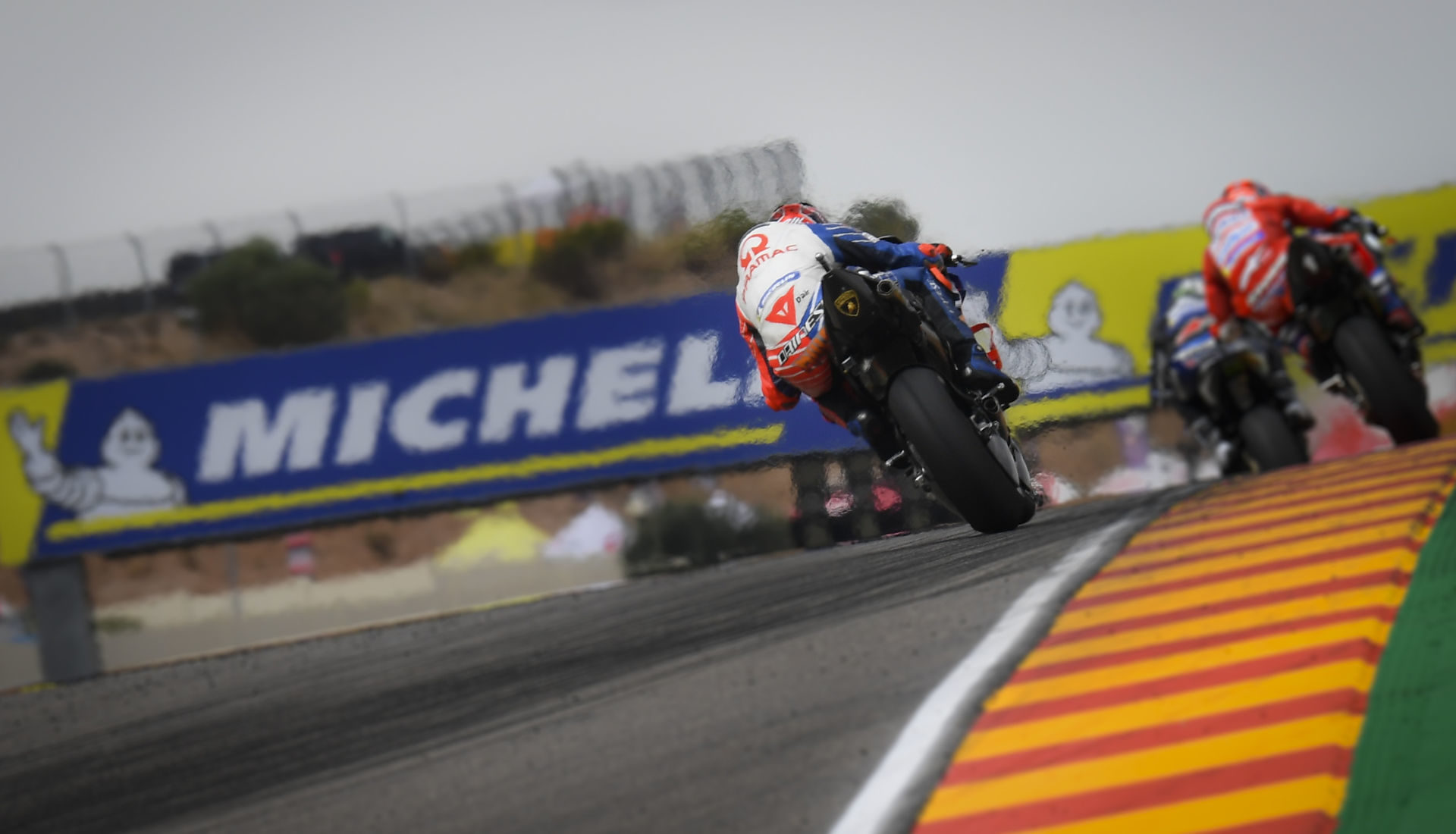FIM MotoGP™ Stewards update track limits protocol
New guidelines come into force for infractions on the last lap
In previous eras of the Championship, the limits of the track were defined by a wall/barrier, which meant riders had no margin for error. As circuits got safer and run-off areas were created, kerbs were installed to signal the limit of the track. They were also intended to be detrimental for riding on as they were not flat. However, in time, the machines developed and improved, meaning they no longer lost any traction on kerbs.
Therefore, with the aim of improving upon natural grass but without providing good traction, artificial grass was installed on the outside of the kerbs. However, this was found to be dangerous after rain as it wouldn’t dry as fast as the track, causing crashes.
Now, artificial grass has been replaced by a concrete edge, giving the riders a safe margin to be able to push for the limit, make mistakes and fight for positions. However, there are clear advantages to exceeding the limits of the track, and therefore it must be discouraged.
Exceeding track limits means a rider has both tyres outside the track at the same time. If an infraction occurs at any time other than during a race, it results in the cancellation of the sector time and therefore cancellation of the lap. If an infraction occurs during a race, there can be a number of different outcomes.
If the rider loses time and is clearly disadvantaged, no action is taken and it’s not recorded.
Some mistakes are allowed if a loss or gain is indeterminable, but too many incidents are deemed an advantage because the rider is not using the same track as their competitors. If a rider makes three infractions, a warning message is sent to their dash. Once there are five track limit infractions, a Long Lap Penalty is issued via a signal board, with a message sent to the rider’s dashboard as well.
In MotoE™, races are much shorter. Therefore the number of permitted track limit incidents has now been reduced from five to three, with a warning after one.
If the FIM MotoGP™ Stewards deem a rider to have gained a clear advantage in one single track limit infraction, a penalty can be issued. This can vary from a Change of Position, a Time Penalty or a Long Lap Penalty. These instances are recorded but not included in the undetermined count, as a rider will already have been penalised for them.
At the Gran Premio Michelin® de Aragon and following consultation with the Safety Commission, it has been decided to update the protocol for track limit infractions that occur on the last lap of a race.
From now on, an infraction on the last lap that has affected a race result must indicate that the rider in question was disadvantaged by exceeding track limits. If the Stewards deem there is no clear disadvantage, the rider will be penalised with a change of position or a time penalty. This is to ensure that any rider exceeding track limits on the final lap must be in a worse position than the rider or riders with whom they are directly competing for a finish position.
Decisions regarding track limits are the sole responsibility of the FIM MotoGP™ Stewards Panel and are final, with infractions confirmed by video. There is no possibility of protest or appeal.






